1) Customer persona tools
Make My Persona by HubSpot
This free tool makes it easy to develop customer personas from scratch. HubSpot walks you through a series of simple steps and deliver a comprehensive customer snapshot that you can use to target your marketing campaign. If you’re a HubSpot customer, you get even more utility out of this tool—you can combine your personas with your existing software to track performance through the sales funnel.

User Persona Creator by Xtensio
Xtensio offers one of the most versatile free tools, which lets you drag and drop modules, delete and create new categories, and truly customise your personas. Their website also offers basic ‘how to’ guides on persona creation, in case you find the creation process overwhelming.
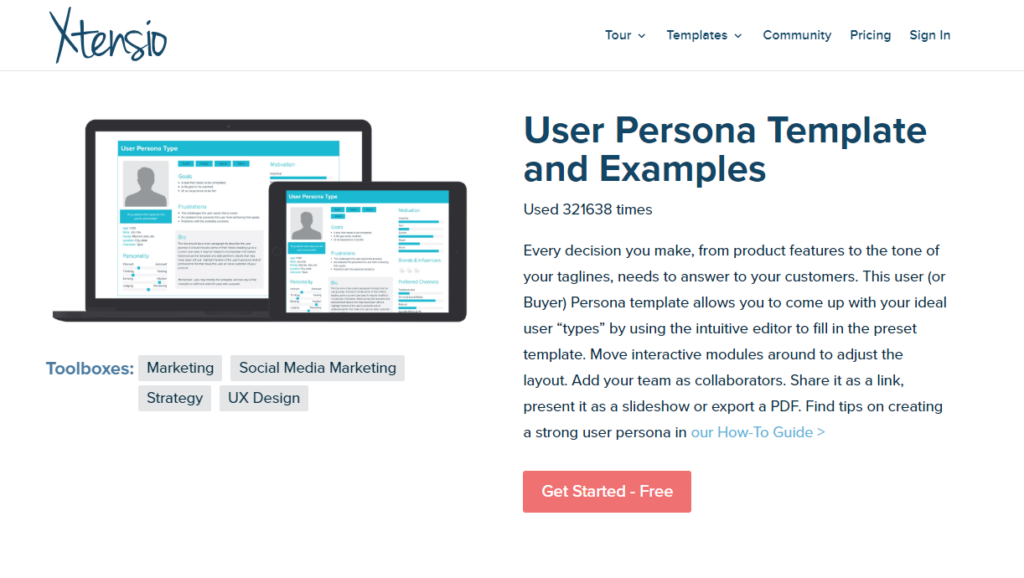
2) Tone of voice monitoring tools
Inconsistent branding is the serial killer of success, which is why entire industries have sprung up around brand management. There’s even software that will ‘read’ your content and evaluate brand consistency.
This type of software comes with a hefty price tag, so smaller businesses usually need to monitor consistency themselves. The most practical way to do this is to limit content creation to a select group of people. Whether you seek out an agency to produce copy, hire an independent copywriter, or write your posts in-house, minimising the number of copywriters will reduce inconsistencies across the board.
While there’s no quick and easy solution, the following free tools can help you monitor branding and tone of voice across your content:
A clear editorial mission statement
This is technically a pre-emptive tool that will help you focus your content by clearly defining your brand and the goals you hope to achieve through your content. An editorial mission statement is a must-have for all content marketing strategies—it gives your writers a purpose and a solid foundation to fall back on. To learn how to create an editorial mission statement for your content marketing, check out A Simple Tool to Guide Tone of Voice by Kevan Gilbert and How to Write Your Editorial Mission Statement in 3 Steps by Kane Jamison.
Grammarly
When used correctly, spelling and grammar go unnoticed. However, one thing’s for certain: if you get it wrong audiences will look disapprovingly upon you. A poll by Global Lingo found that 59% of people in the UK would not purchase from a company with spelling mistakes on its site or marketing collaterals. To avoid this, we’d recommend using the free Grammarly chrome plug-in which has your back for spelling, grammar and punctuation wherever you’re writing.
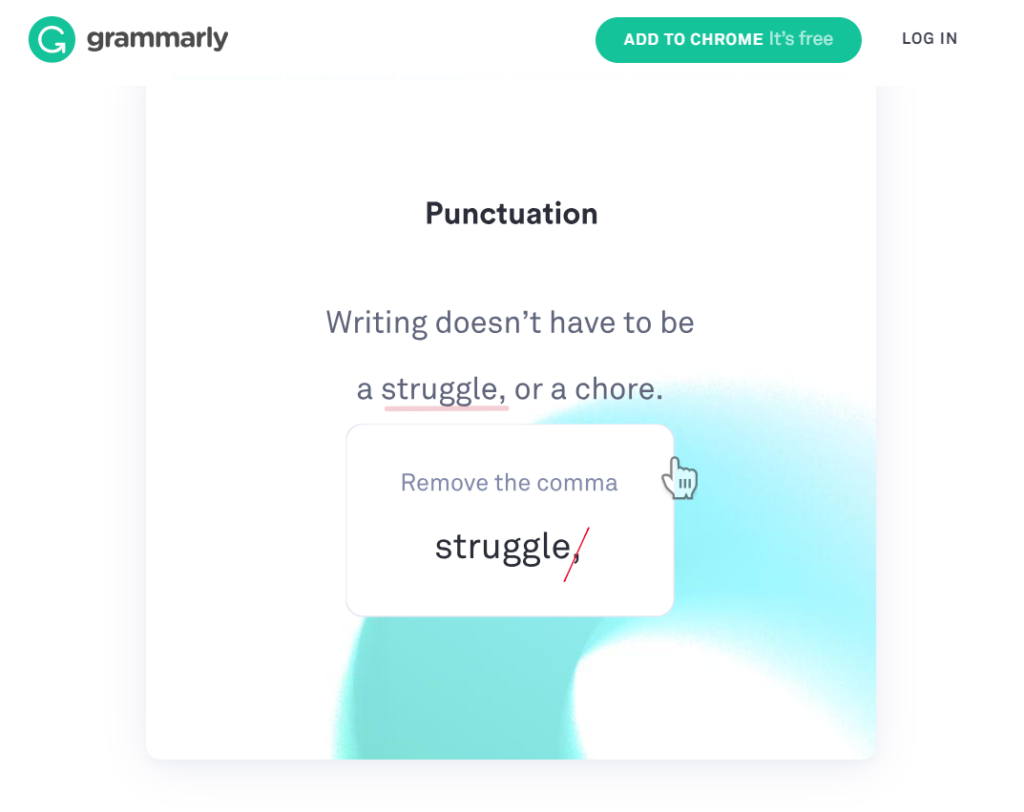
Yoast Plug-in
The free version of yoast is a useful blogging tool which helps your posts maintain a consistent length and keyword focus. Also, while it won’t exactly read your text for brand consistency, it will score your copy according to the Flesch Reading Ease test, which gives you an idea of how consistent your writing styles are from post to post.
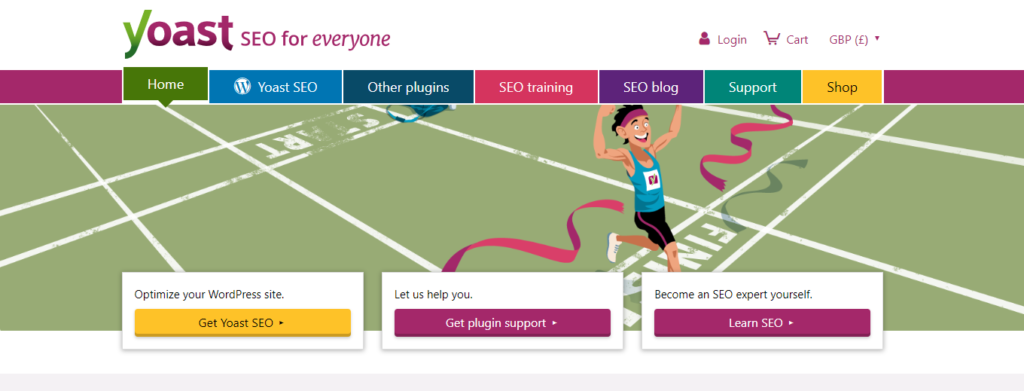
Hemingway App
Again, while not especially useful for consistent branding, Hemingway ensures readability across your website remains consistent. This tool has plenty of useful features including a grading scale, suggestions for how to make your content more readable and a breakdown of how much of your content is ‘hard’ or ‘very hard’ to read.
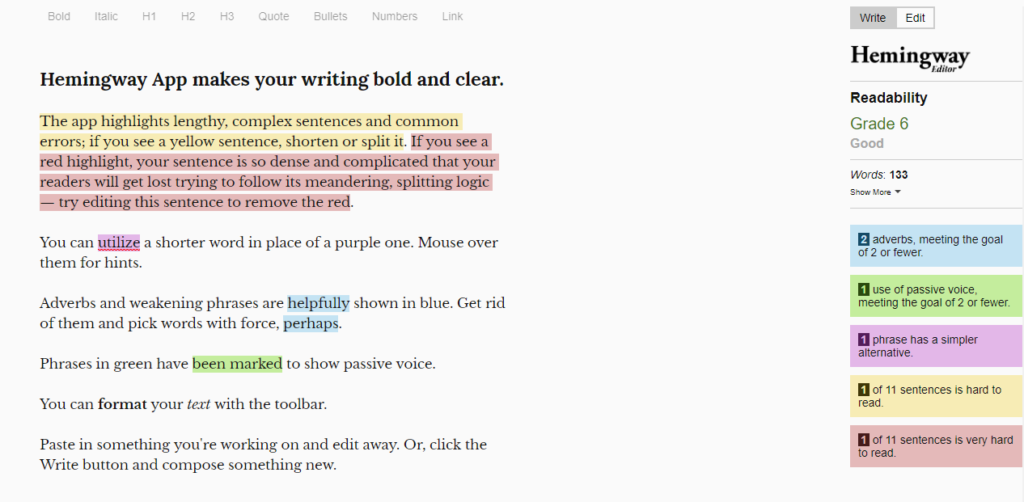
Cliché Finder
When writing for an industry-specific audience, it’s far too easy to slip into jargon and clichés to pad out your argument or point. As infamous Modernist poet Ezra Pound states in A Few Don’ts by an Imagiste: “Use no superfluous word, no adjective, which does not reveal something”.
This is especially true in your brand copy. If you’re not adding value, then remove. This is where the practical Cliché Finder tool comes in. Paste in your copy and click ‘Find Clichés’ to return highlighted sentences that lack originality, are overused, or need clarifying.

3) Ideation Tools
Content Strategy Helper by Builtvisible
Our Content Discovery Tool is a free Google Spreadsheet that helps you mine trending data from a variety of sources, such as Twitter, Google Search Trends, YouTube, and Reddit. This tool will even generate some possible titles for you based on top news feeds.

Quora
Outside of search engines, Quora is probably the world’s biggest Q&A platform. Frequently asked questions within your niche make great fodder for new content ideas. You can also establish credibility by answering questions relating to your field of expertise.

Answer the Public & Google’s People Also Ask
Ultimately, the content you create needs to be of interest to people and satisfy their needs. While creative flair is encouraged, there needs to be a consensus that what you’re creating is answering the ‘hows’ and ‘whys’ of internet users. People Also Ask and Answer the public are two effective keyword tools, but they also help you discover untapped or undeveloped topic areas that your audience need answers to.
If you’re interested in learning more about PAA’s untapped opportunities, read our guide here.

Reddit is the content marketer’s secret weapon. It’s a bustling hub of current trends, hosting more than 36 million user accounts. Alternatively, if you’re seeking specific stories about inbound marketing, inbound.org has been hailed as the ‘Reddit for inbound marketers.’

YouTube
Even if your budget doesn’t stretch to video content, or if it’s not the right format for you right now, never underestimate YouTube as a stream of creativity for all content channels. Just by typing in a topic area, you’ll receive thousands of results within seconds. Next, filter results to playlists and sort them by the largest view count to find a wealth of topic areas that are already validated as interesting.

4) Organisational tools
Evernote
Probably the most popular organisational platform out there, Evernote helps you put a pin in every task. New ideas? A strict publishing schedule? An editorial calendar? You can plan all of this into Evernote and sync your schedule between devices.
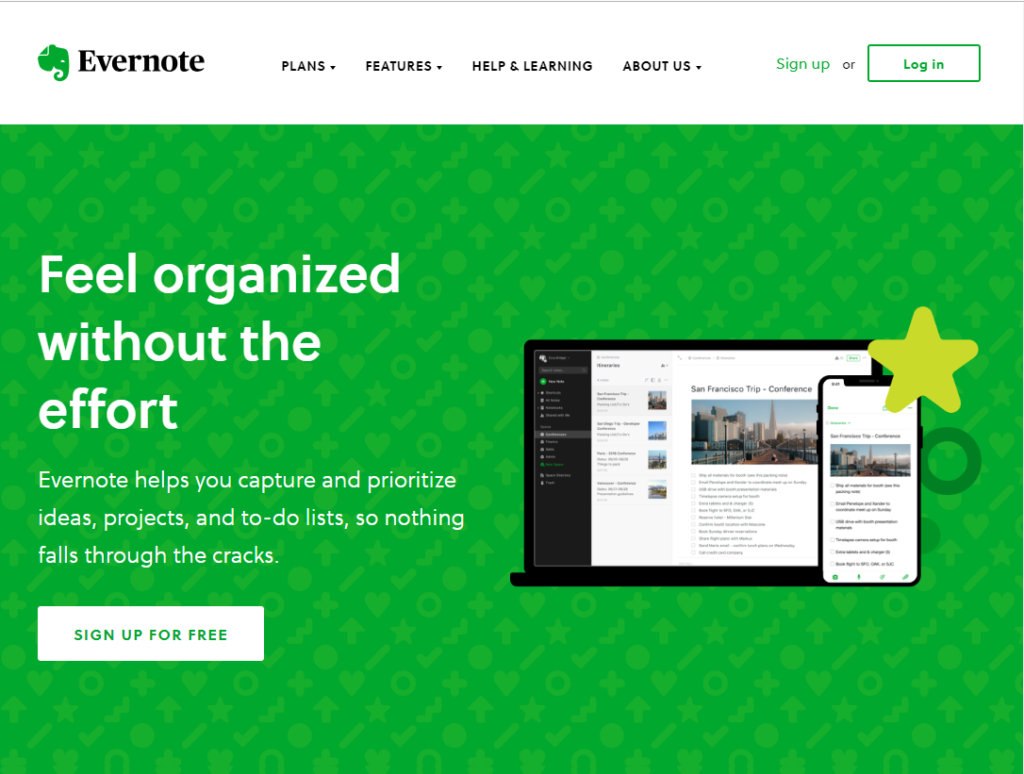
Trello
Trello is a powerful free platform for keeping a small team ship shape. It lets you post each to-do item on cards that are easy to edit and prioritise, which in turn helps you manage projects, keep track of deadlines and collaborate on content in real time. This is the tool I use to organise my day-to-day.

Ever see an interesting article that you don’t have time to read, and then struggle to dig it back up again? Pocket is a handy app that allows you to save different forms of online content such as videos, images and articles into curated spaces. You’ll never have to trawl through your browser history again.
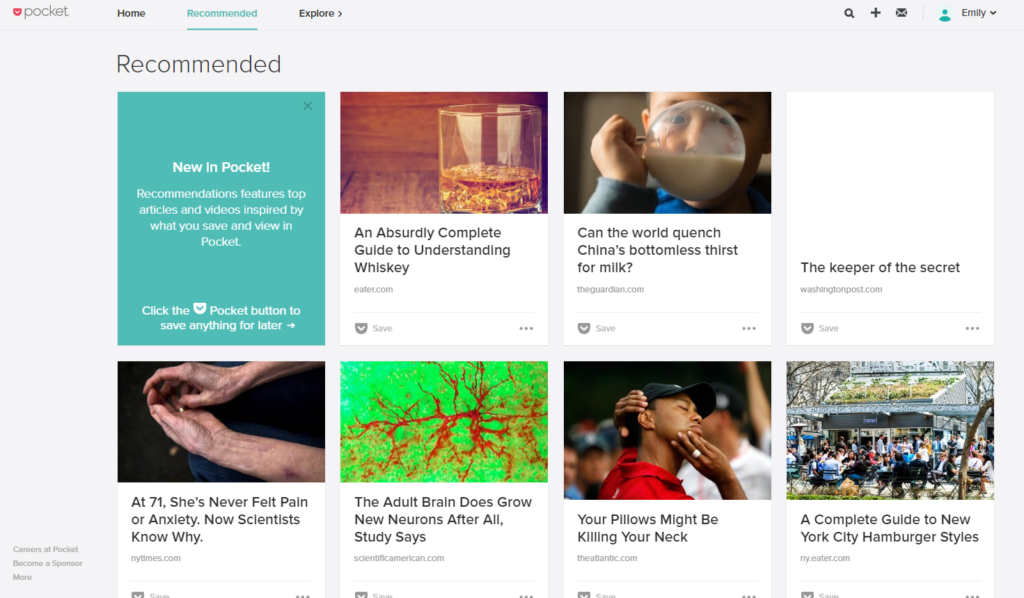
5) Content Creation Tools
GIMP
The GNU Image Manipulation Program (GIMP) is a free and open source image editor. Think of it like a scaled down Photoshop, without the high learning curve (or price tag). Images are one of the most essential parts of conversion, so make ample use of this tool.

Infogram
Infogram is a tool for creating free visual content such as charts and infographics. It features Excel compatibility and excellent responsive design across all platforms, including mobile devices. You never have to settle for boring charts again.
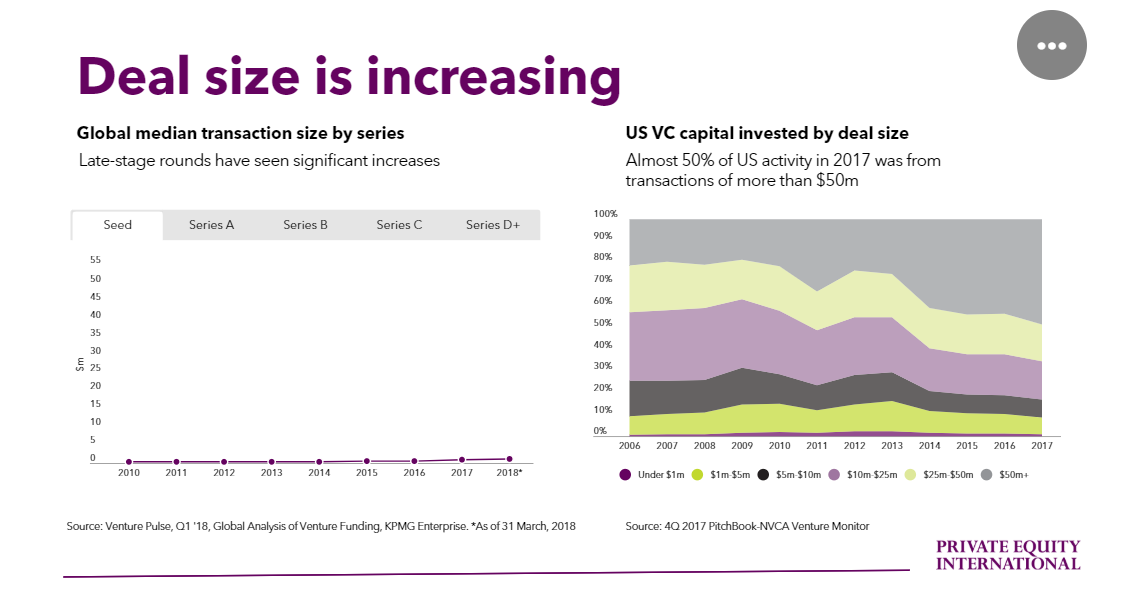
But wait, there’s more!
Of course, content marketing doesn’t stop at creation. Next, it’s time for distribution and tracking.
If you don’t distribute your content, it won’t matter how beautifully crafted it is, your audience will never see it. If you don’t track your content, you won’t know which content consistently knocks it out of the park and which you’d better retire. Both are essential to a good content marketing strategy.
6) Distribution Tools
As well as Reddit, Twitter and Quora, below are some free tools to help with content distribution:
MailChimp
MailChimp makes things easy for new businesses, offering a completely free platform for up to 2,000 subscribers and 12,000 monthly emails. With this software, you can begin building your subscriber base through personalised emails.
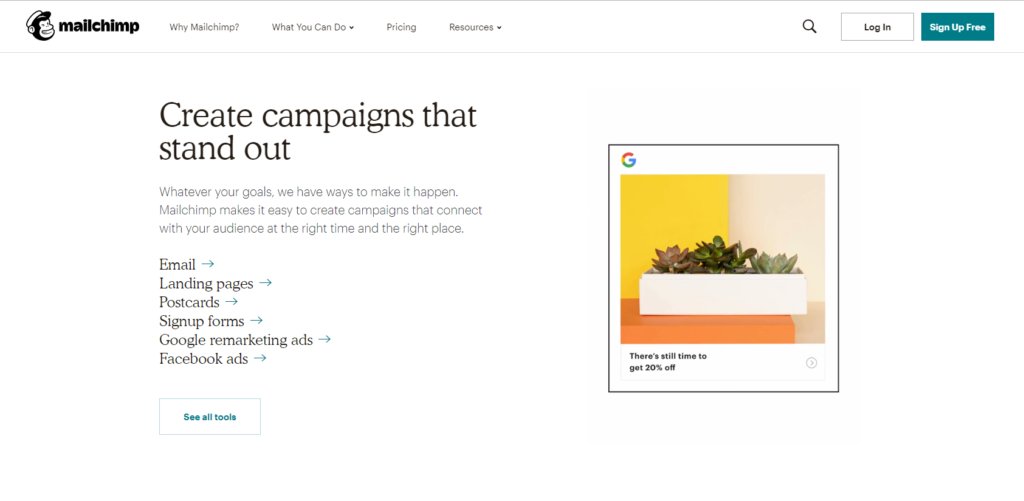
Buffer
Buffer lets you stagger your content releases across Twitter, Facebook, Google+, LinkedIn, and (in paid versions) Pinterest. The free version only allows you to have one profile per platform, but this should be more than enough to get new businesses dipping their toes in the social media scene. Keep that content flowing.
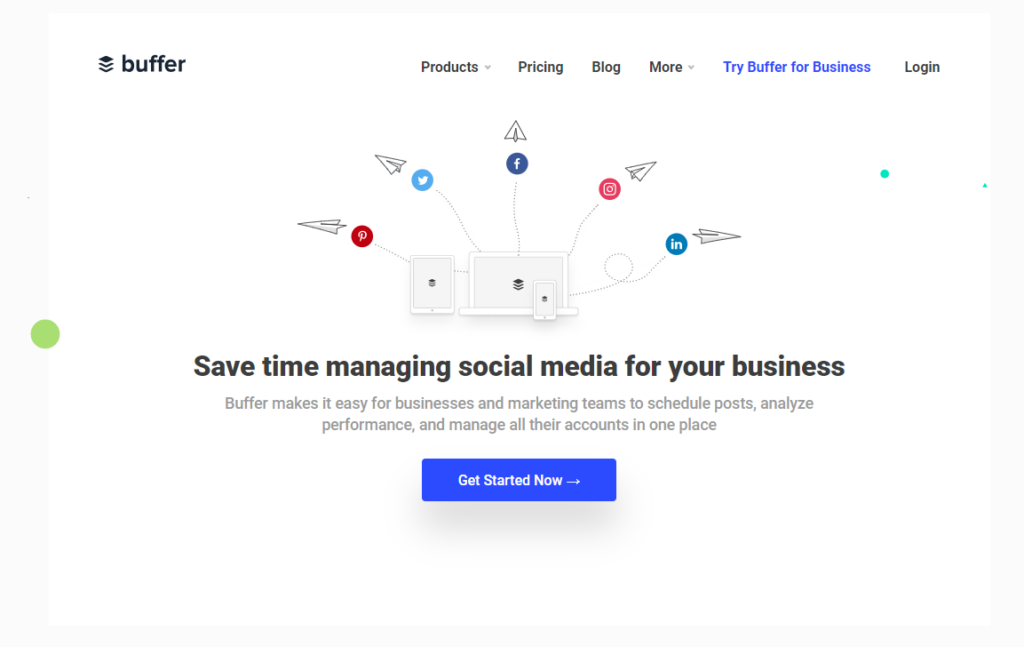
Pinterest is user-friendly and a great source of visual content on a wide range of all topic areas. By creating your own boards using a topic area and promoting using the relevant hashtags, users can pin, share and reuse your content.
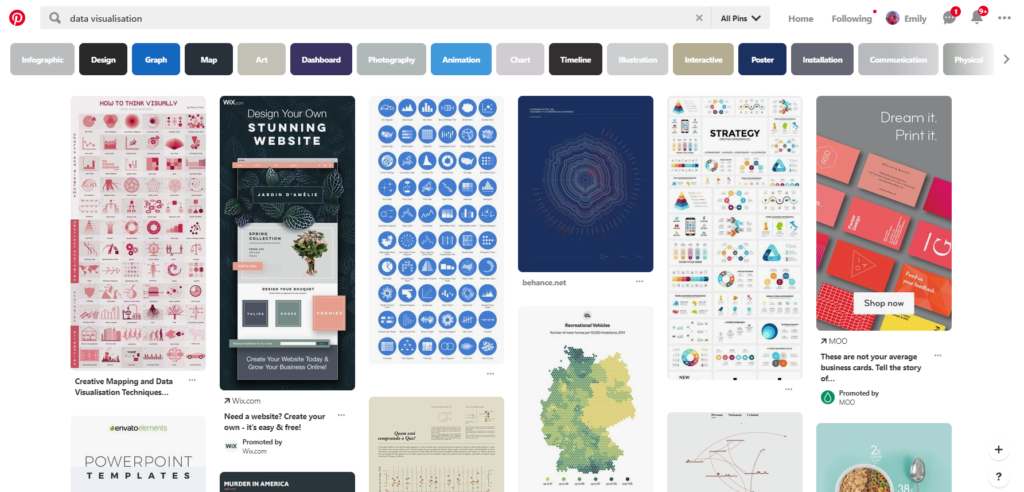
7) Tracking Tools
Google Analytics
When correctly implemented, Google Analytics is one of the best free analytics tools on the market. The insights you gain here can drastically improve both your content marketing campaigns and your business as a whole. When it comes to monitoring site traffic, it’s hard to beat the tidal wave of raw data that Google Analytics delivers.
So, there you have it, 21 of the best free tools to develop your content marketing. We’d love to hear about your experiences with them or if you have any suggestions for additional ones. If you’re confused about where to start with content marketing, get in touch and speak to one of our content consultants about how we can help!

Steven Peters
Thanks for the comment, Mauritius.
You’re right, Unplag is a great tool that many content marketing strategists (especially those outsourcing to copywriters) will find useful. Sadly, it (and many other great tools) didn’t quite make the cut, because even though they’re cheap, they’re not free. That said, the price tag on Unplag isn’t steep–if companies are worried about plagiarism, they could do a lot worse than this handy tool.